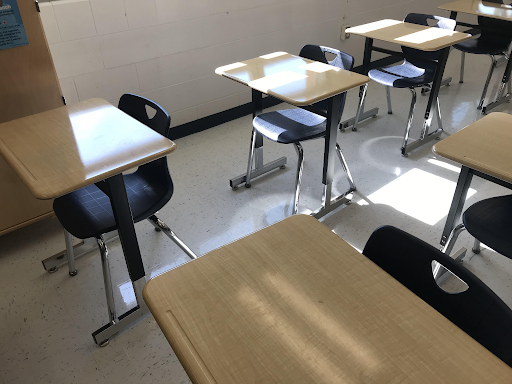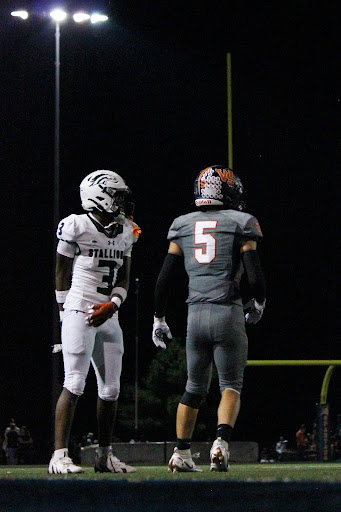COVID-19 absences raise questions

Photo courtesy of Saharla Mohamoud
When a student gets tracked with COVID-19, students sitting next to or close to students are required to be on pause as well, which often leads to large gaps in classrooms impacted by this policy.
October 28, 2021
As the school year proceeds per usual, the absent chairs and desks in every classroom are becoming abundantly apparent, which raises questions about what the future may look like.
In an effort to combat COVID-19 in tandem with CDC guidelines, WS has implemented certain procedures in case students test positive for the virus. The main form of communication within this protocol is the emails regarding positive cases to students and parents.
Additional emails are sent to students who have been in contact with COVID-19 positive students through seating arrangements, bathroom breaks, lunch, etc., and are required to get tested as well as stay home from school.
“Every once in a while, we get an email that is about a student getting put on pause, and teachers will first use zoom to reach out to students,” stated English teacher Matthew McCall, “we can record our lessons [for the certain] students that are out, [so] they don’t feel like [they are] missing too much.”
The procedure is done to keep the school as safe as possible amidst the pandemic, but it also poses another question as to whether or not this can negatively affect the learning process.
Despite new policies being introduced, like requiring one-on-one time between teachers and COVID-19 absent students in order to provide class materials and guidance on topics and the creation of streaming setups in classrooms, difficulties for the students can already be foreseen.
“The most annoying [aspect] is probably [having] to figure out how to make Zoom work in the classroom and when I use my computer to present [and] support class,” said English teacher Morgan Bratton. “Additionally, it’s tough to take on the expectation to follow up with the student, rather than the student being expected to stay on track with the class like they would with any other absence.”
Success, however, is starting to be seen with these new methods, particularly with students not falling behind with their work despite circumstances.
“The students who have been absent due to COVID or due to any other reason have been very responsible in making up their work,” mentioned history teacher Erin Wigginton.
Subsequent concerns also lie in wondering if these protocols are effective enough to maintain a safe learning environment for students. With the constant debate surrounding the protocols, teachers like Wigginton believe it’s important to remain considerate of the efforts made by the school board and administration.
“Being a school board member is tough right now, they are looking at an overwhelming amount of material, curriculums, health concerns. [The work is] just exponential [beyond] their regular job, so I would be hesitant to criticize anyone’s attempt at leading us through this crisis” expressed Wigginton. “It’s a community concern that needs a community solution.”
Other teachers, like Bratton, also emphasize a need for communication between students and teachers alike.
“Realistically this is hard for everyone, [however], I do hope that it’s communicated to and expected of the [absent] student to put forth active effort rather than just waiting for the teacher to touch base,” said Bratton. “That’s an essential adult skill, which is essentially the school’s ultimate goal: preparing youth for [adult] life.”
As the pandemic still continues and classrooms will inevitably see more absences, it may take time to become acquainted with these new adjustments.
“Life is hard enough in this new formula, so let’s just slow down, let’s relax a little, and let’s just take care of each other,” said Wigginton.




